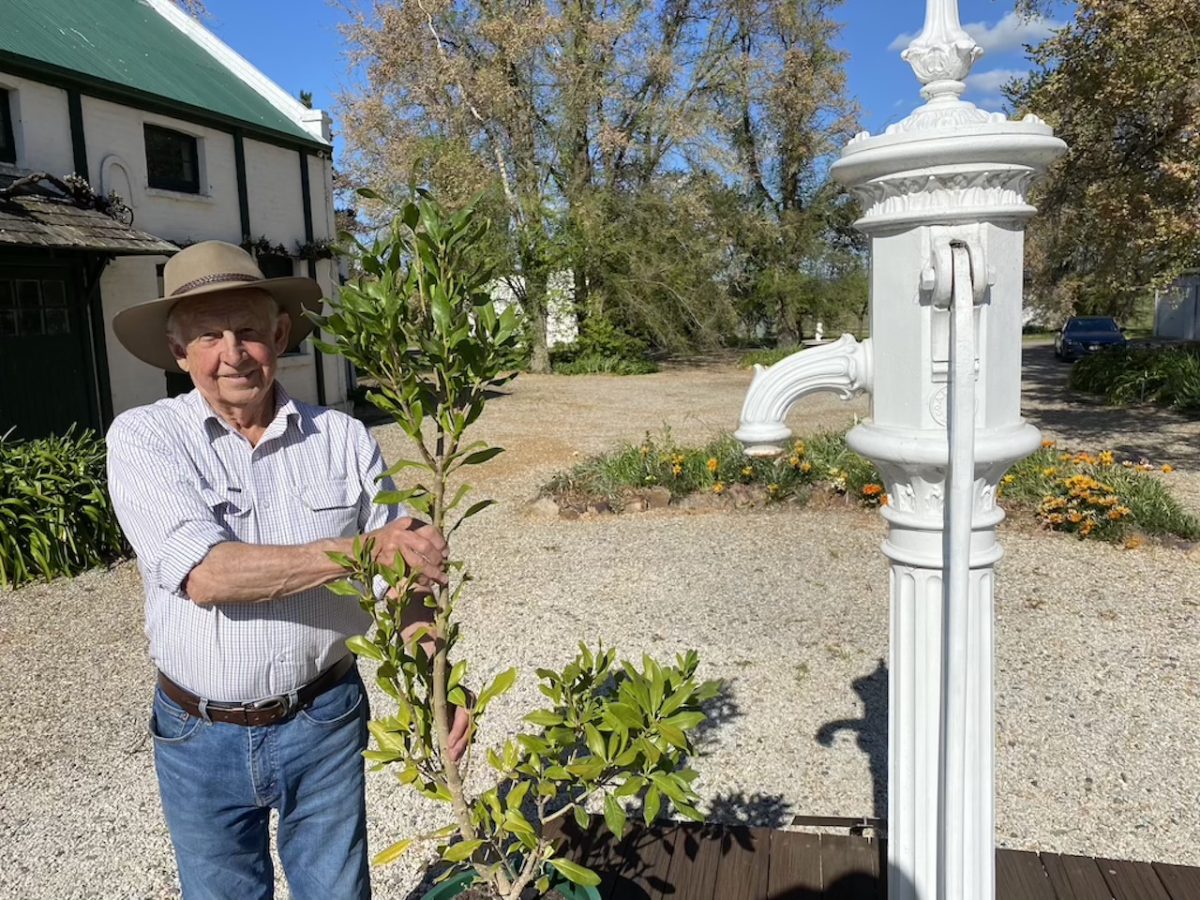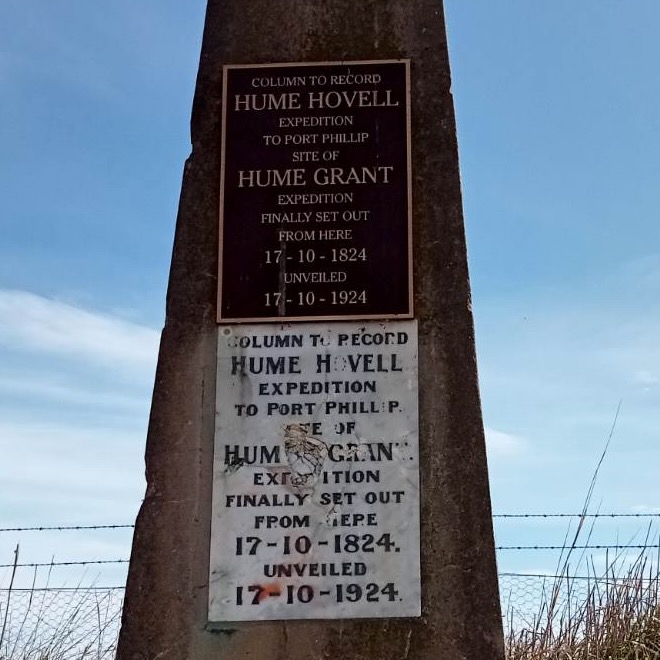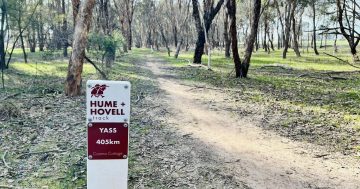
Stuart Hume with a cultivar of a Picconia excelsa tree that was planted by the explorer Hamilton Hume at his home near Yass in 1840. The tree will be planted beside the Mulwaree Walking Track and marked by a commemorative plaque. Photo: John Thistleton.
Two hundred years on from their trek beyond the boundary of settlement at Lake George, cities and towns along their route are commemorating Hamilton Hume and William Hovell’s exploration journey to Port Phillip and back.
In Goulburn, historians and descendants will plant a sapling grown from a cutting taken from a rare tree Hume planted at his home near Yass in 1840.
Travelling between 14 and 17 miles (22 and 27 km) each day, the two explorers and their six assigned convicts, two carts, two horses and four bullocks and hunting dogs set out making good progress, given the rough, rain-sodden tracks and swollen creeks.
Heavy rain and squally weather persisted in those first days of October, 200 years ago.
About 10 days after leaving Appin with provisions of flour, pork, sugar, tea and tobacco, a tent, tarpaulin, pack saddles, firearms and ammunition, the party crossed a string of waterholes later known as Mulwaree chain of ponds, where they camped overnight.
Aged 27 at the time and confident in his bushcraft, Hume had been an explorer since he was 17. Hovell, 38, had survived being shipwrecked and was now applying his navigational skills while accompanying Hume on their history-making trek. The men funded the journey themselves. Hume was forced to sell his iron plough to pay for his most ambitious expedition.
“The future site of Goulburn was a blank space on the map,” says historian and author Roger Bayley. “[It was] surrounded by the undeveloped rural estates of absentee entrepreneurs like William Lithgow at ‘Kenmore’ and Andrew Allan at ‘Strathallan’, influential civil servants who had taken up Governor Macquarie’s offer of grazing land in the ‘New Country’.
“They had sent overseers and convicts with mobs of sheep and cattle to spread out over the park-like river flats, which [it is thought] had been cleared by means of firestick farming to enable Indigenous people to hunt for game.”
Roger says one pioneer, James Atkinson (with typical disdain for the original inhabitants), described the plains as “extremely well adapted for sheep grazing, being covered with fine grass and herbage, and generally well-watered … the silence and solitude that reign in these wide spreading, untenanted wastes, are indescribable, and must have been witnessed to enable any one to form a proper conception of them; no traces of the works or even the existence of man are here to be met with, except perhaps the ashes of a fire on the banks of some river.”

A cropped copy of surveyor John Oxley’s map of the colony at that time of Hume and Hovell’s journey beyond Lake George. Image: Roger Bayley/History Goulburn.
Roger says a travelling parson, James Hassall, had a different view. He rode cross-country to visit his far-flung flock, and saw wild hills and gorges where the settler’s axe had not yet been. He described trees of massive size and girth, camped inside cavernous hollow logs to escape the rain, and tickled the bellies of native fish in crystal-clear waterholes.
Having reached the area in 1824, Hume and Hovell’s significant exploration work was yet to begin. Hume had been in the area previously, and had a property further west.
Goulburn historians, including Hume’s collateral descendant Stuart Hume, will make the 200th anniversary with a tree-planting ceremony next Saturday, 13 October, at 11 am at Lansdowne Bridge, Forbes Street, close to the site where the expedition party camped.
History Goulburn and Goulburn Mulwaree Council are organising the event, which is centred on planting the rare species of tree, Picconia excelsa.
Stuart hopes some descendants of the six convicts who accompanied the explorers are able to attend the tree planting. Some of them were located years earlier for the 150th celebrations of the exploration by his father, Stuart Hume (senior).
Hovell recorded much of what happened on the overland journey, including the weather each day, generally starting out at sunrise and bullocks straying on occasions while seeking better feed, which cost the men time.
Years later, in 1875, Hovell died in Sydney and was interred in Goulburn, where he had earlier settled and became an active member of civic affairs.

An obelisk on the old Hume Highway near Gunning commemorating the start of Hume and Hovell’s journey. Photo: David Stevenson.
Friends of Goulburn Historic Cemeteries are installing better signage for Hovell’s grave at St Saviour’s Cemetery and a QR code link to the website to help locate graves.
By the 1830s, Hamilton Hume, his two brothers and sister were firmly established on pastoral holdings at Appin, Marulan, Gunning and Yass. By the 1840s, they had extended their holdings to the Murray and western districts of NSW.












